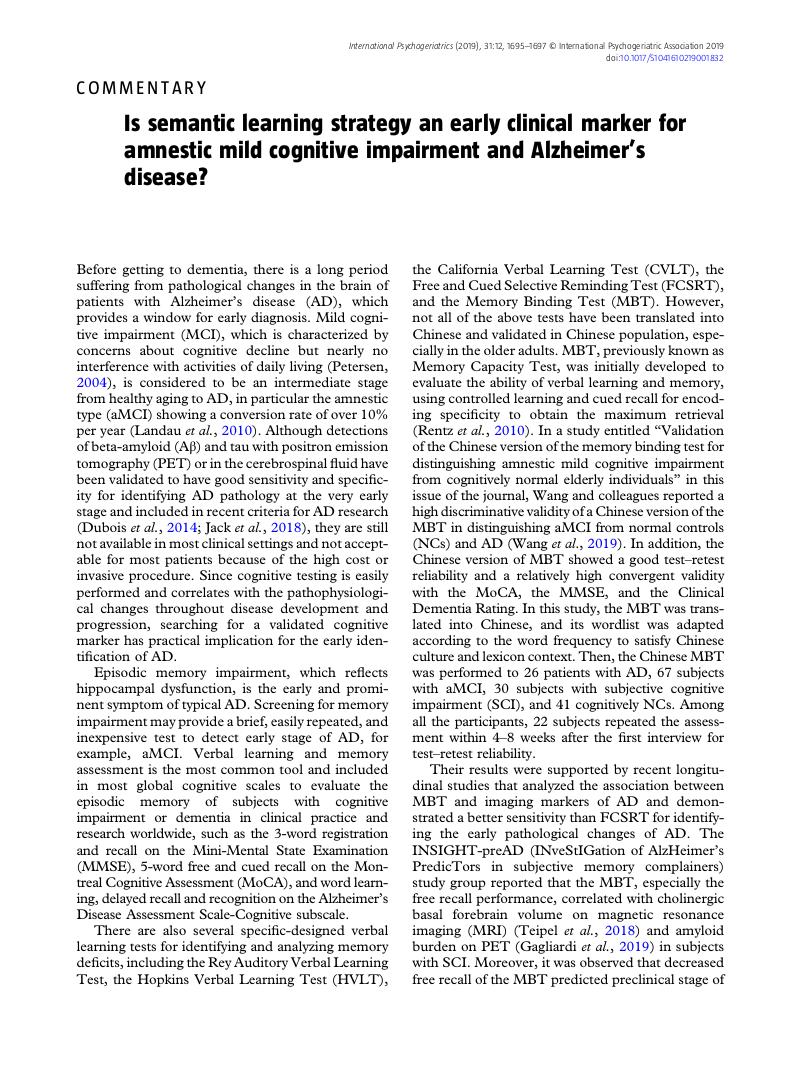Crossref Citations
This article has been cited by the following publications. This list is generated based on data provided by Crossref.
Vonk, Jet M.J.
Twait, Emma L.
Scholten, Rob J.P.M.
and
Geerlings, Mirjam I.
2020.
Cross-sectional associations of amyloid burden with semantic cognition in older adults without dementia: A systematic review and meta-analysis.
Mechanisms of Ageing and Development,
Vol. 192,
Issue. ,
p.
111386.
Sun, Wenhao
Wu, Qiuyan
Chen, Huifeng
Yu, Lechang
Yin, Jie
Liu, Fang
Tian, Rui
Song, Bingbing
Qu, Bingqian
Xing, Mengya
and
Zhang, Nan
2022.
A Validation Study of the Hong Kong Brief Cognitive Test for Screening Patients with Mild Cognitive Impairment and Alzheimer’s Disease.
Journal of Alzheimer’s Disease,
Vol. 88,
Issue. 4,
p.
1523.
Rahmani, Fahimeh
Khanjani, Mohammad Saeed
Marsa, Roya
Sharifi, Ghoncheh
Bahadori, Elham
and
Moghimi Sarani, Ebrahim
2022.
Learning Strategies and Verbal Memory Deficits on the Shiraz Verbal Learning Test in Patients with Alzheimer’s Disease and Amnestic Mild Cognitive Impairment.
Iranian Journal of Psychiatry and Behavioral Sciences,
Vol. 16,
Issue. 2,



